An in-depth guide
Inbound call center
Getting a high volume of inbound calls? Learn how to empower your inbound contact center agents—and see how Dialpad's AI-powered customer engagement platform can work for your organization!
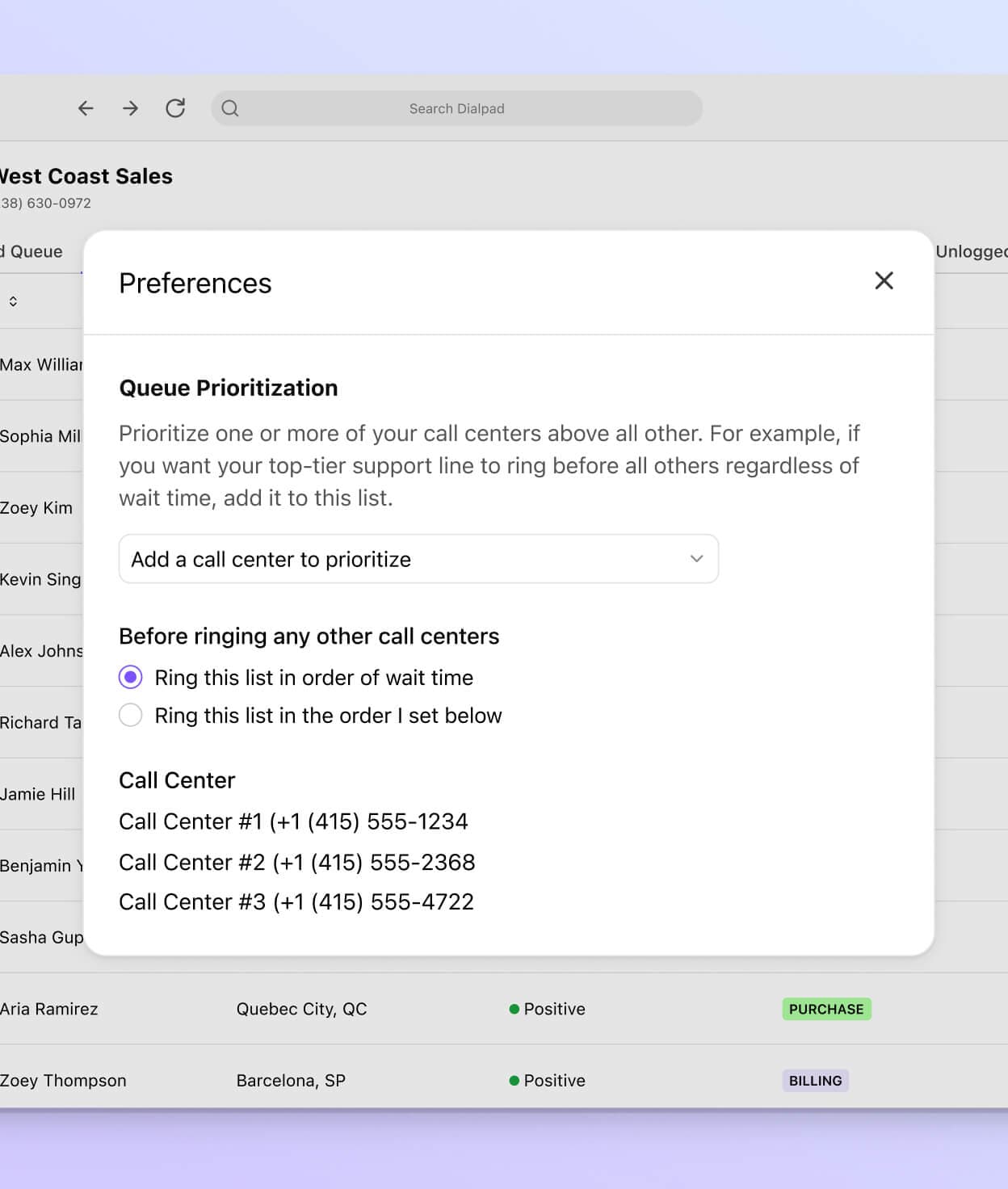
An inbound contact center is a must for any business that gets a lot of phone calls, emails, and messages from customers and prospects.
Whether you operate a small business or a large organization, having a good inbound calling strategy can make or break your customer experience (and retention rates). And the question to ask here is: can your customers interact easily with your business and get the help or answers they need, no matter when they’re reaching out?
In this guide, we’ll walk through what today’s inbound call center looks like—and how to set one up for your business.
✒️ Grab the Contact Center RFP Checklist
Vetting different contact center solutions? This RFP checklist covers the essentials to be aware of and why they may be important for your contact center.
What is an inbound call center?
At its core, an inbound contact center is a team of agents that responds to customers (typically existing customers) who reach out to a business. From incoming calls to live chat messages and social media DMs, your inbound contact center is responsible for answering these messages and calls—and ultimately providing a good experience for your customers (and potential customers).
Inbound contact center agents used to be equipped with just phones to take phone calls, but nowadays, it’s much more common for them to be using contact center software that allows them to not only take phone calls, but also do other things like instant messaging and checking voicemails and missed calls:
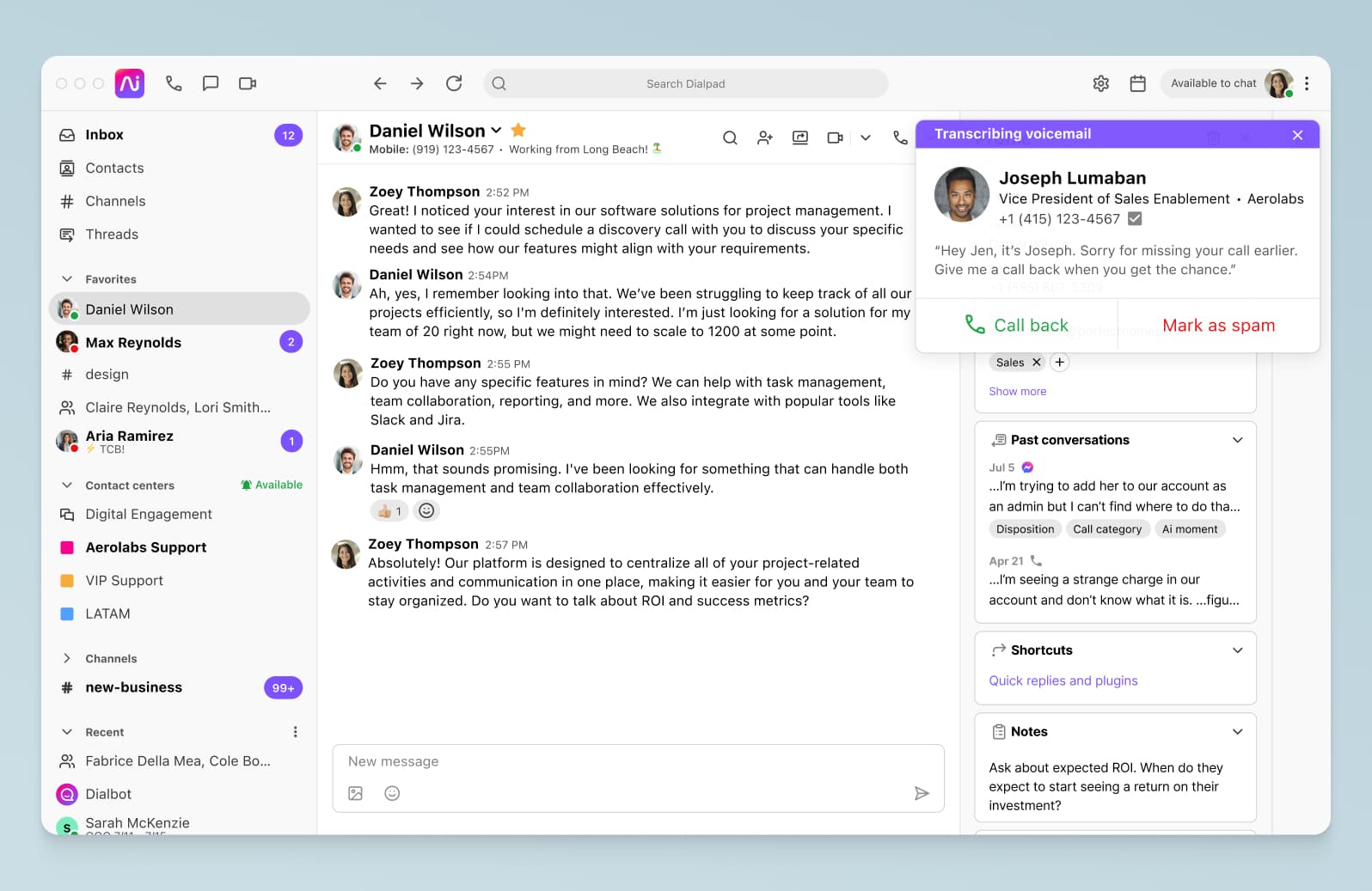
👉 Dialpad tip:
Contact centers are different from “call centers” in that call centers deal only with phone interactions. Today, inbound contact centers have expanded beyond just phone calls, allowing customers to communicate on the channels they prefer—whether it’s voice, email, chat, or SMS/MMS messaging. (You may hear these referred to collectively as a multichannel or omnichannel experience.)
And beyond just your team of agents handling those inbound calls, there are also automations and features that you can use to handle those calls. For example, an automatic call distributor (sometimes referred to as a virtual receptionist or an IVR / interactive voice response routing system) can help your callers guide themselves to the right people or departments—without needing your staff to manually route every call.
(You don’t always have to have your own inbound contact center either. There are many vendors out there that offer creative and budget-friendly inbound call center services and contact center outsourcing.)
If you need an inbound contact center, but are tight on budget or staff, you could outsource. Learn more about BPO, or business process outsourcing, from our VP of Customer Experience.
Inbound vs. Outbound call center: What’s the difference?
Call centers are typically divided into two types: inbound and outbound. For companies or departments that do a lot of outreach (commonly sales teams), an outbound contact call service is essential.
The main difference between the two call center models is of course, the direction of engagement. An inbound call center handles conversations initiated by your customer or prospect, while in an outbound call center, the onus is on your company to make the first move.
👉 Quick note:
The type of call center or contact center you need depends on what kind of communications you need it for—and contrary to popular belief, outbound contact centers aren’t all just for sales outreach and inbound contact centers aren’t all for customer support! There are companies that use hosted contact centers to handle employee or internal communications too! Long story short: it’s all about communication—if your business receives lots of inbound queries, no matter if they’re from customers or not, you could use a contact center to handle it.
Inbound call center services: What do businesses use inbound call centers for?
Often the first thing that comes to mind when we think about inbound contact centers is customer service (for example, a customer calls a retailer because the item they ordered is damaged or faulty). But as we touched on earlier, inbound contact centers can have a wide range of use cases.
Customer service
Of course, inbound calling is probably most well known for this use case. But why is it so important for providing exceptional customer service? Well, it might be because traditionally, a phone call was the easiest way for a customer to reach a company.
Whether your caller needs support services, has a scheduling or appointment question, or wants to make a cancellation request, they expect to be able to do that over the phone with your customer service representatives.
One of the benefits of using a contact center platform instead of just a phone is that beyond connecting the phone call or message, it also lets you gather useful data. For example, in Dialpad, you can see analytics like how many calls your business is getting (and plan your inbound customer service staffing more effectively so your agents don’t get overwhelmed):
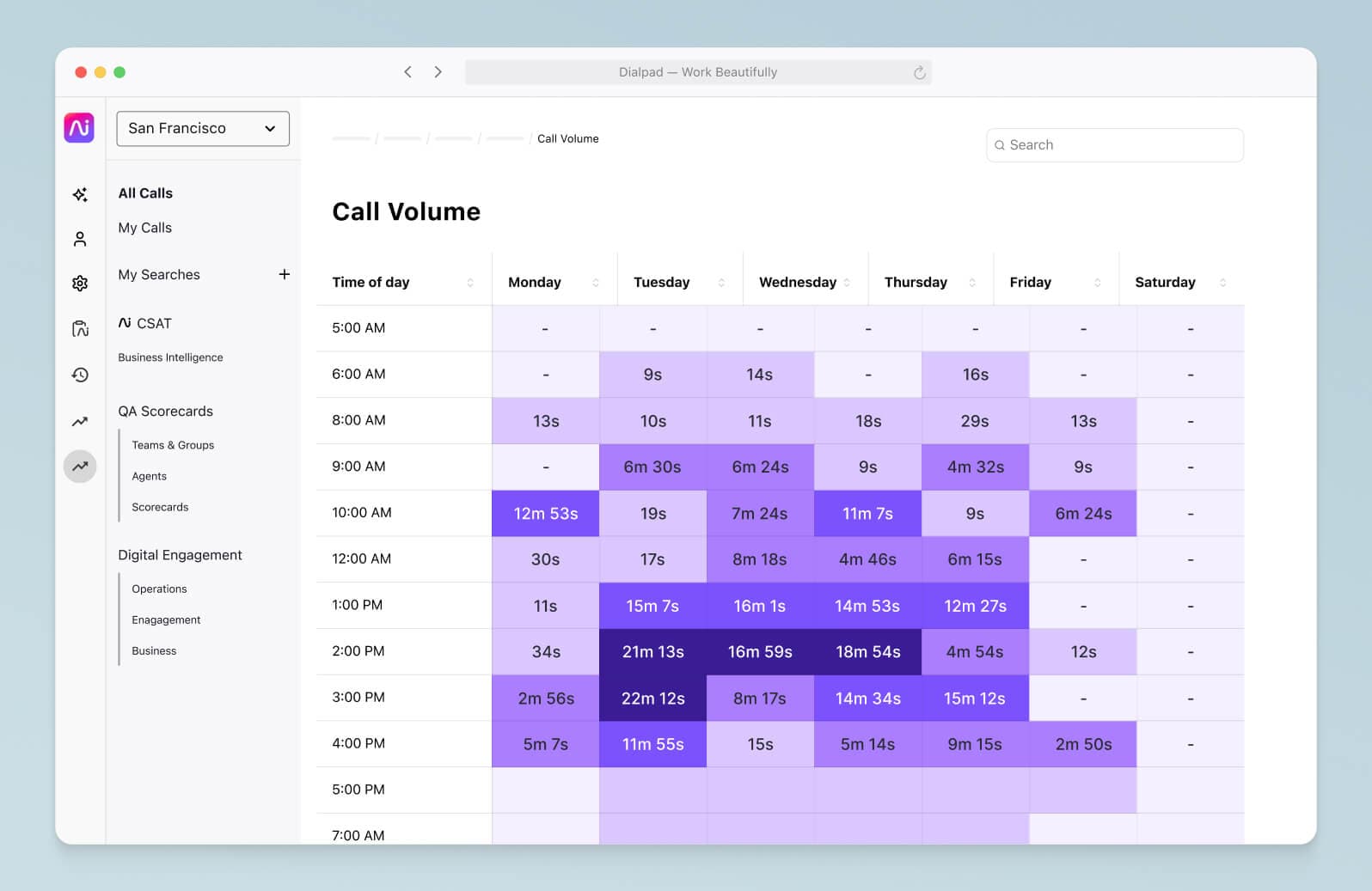
But beyond data, there’s other neat contact center functionality that can help you provide a better customer experience. For instance, say your phone agents are getting lots of tricky questions about things like pricing. You can’t be on every single call with them to coach them through these conversations—so what can you do?
Dialpad Ai not only transcribes all your calls in real time—which allows supervisors to monitor how inbound calls are progressing:
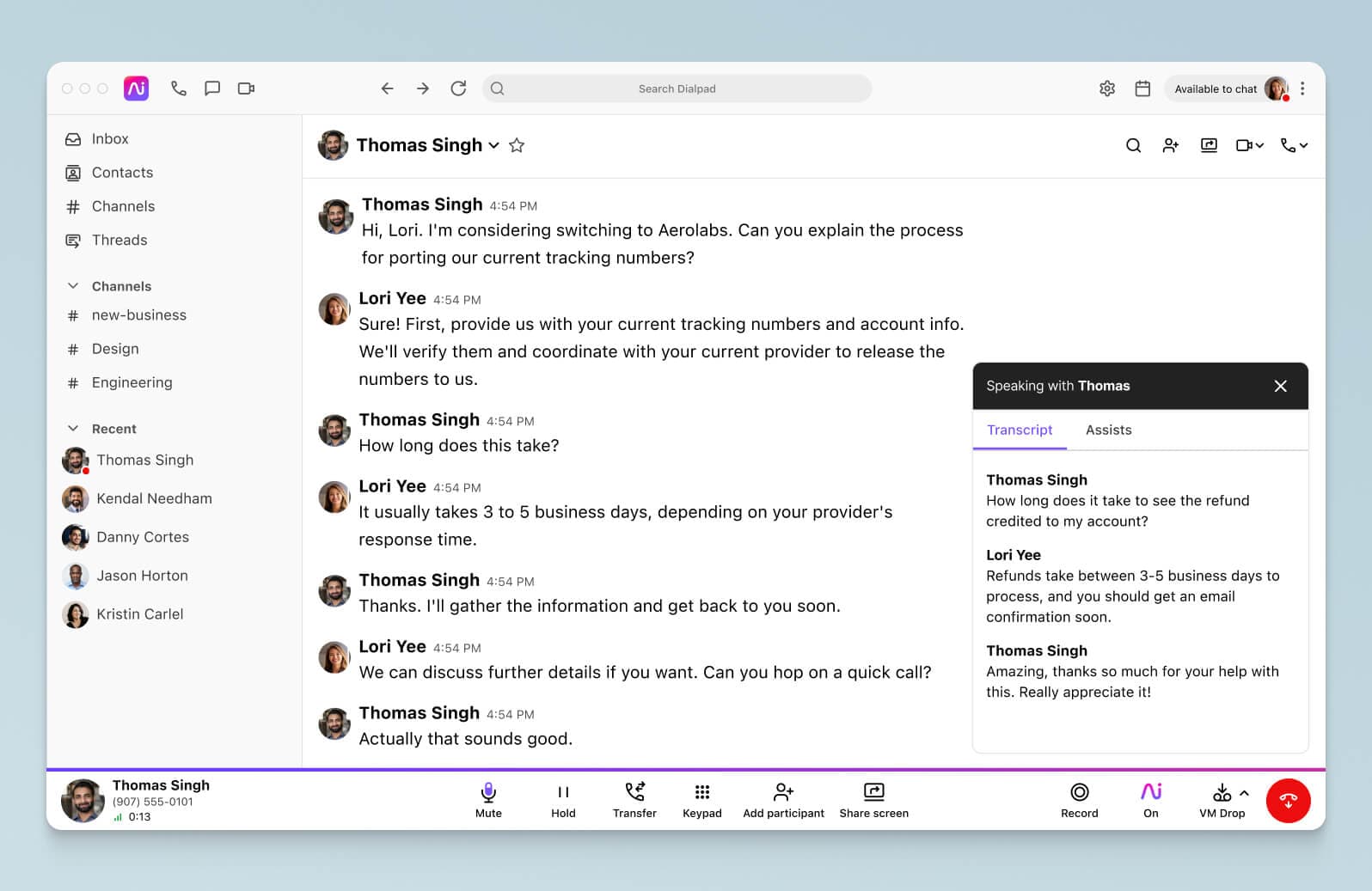
It also allows you to create RTA (Real-time Assist) cards, which are essentially cheat sheets for your agents that pop up automatically when certain keywords are spoken on a phone call. Let’s say your agents are having trouble with pricing questions when people call in. You can create an RTA card with detailed notes about your pricing packages, and set it to trigger automatically on your agents’ screens when the customer says “price,” “pricing,” and “cost!”
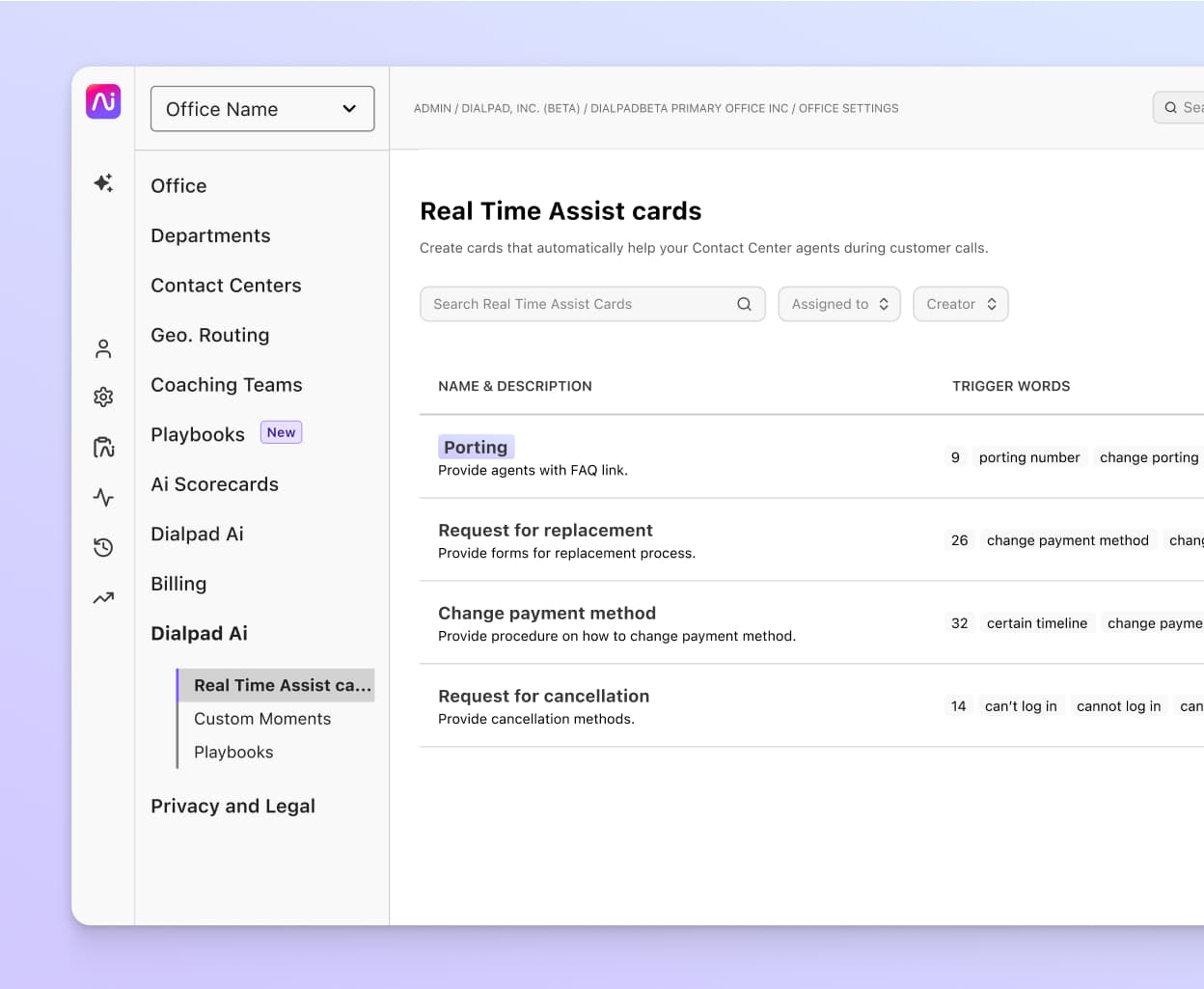
Marketing and inbound sales (people responding to your marketing)
Remember those infomercials on TV that introduce an awesome new product (maybe you remember ShamWow, or even the amazing Slap Chop…)—and then give you a phone number to call?
(“If you call right now, you can get a special promo combo for the low low price of…”)
Well, those companies likely had an inbound contact center (probably an inbound call center specifically) of agents standing by to take phone calls from people interested in that product.
That’s a perfect example of an inbound contact center working hand in hand with marketing to help a business make money.
(Not confident in your inbound agents’ knowledge about your products when prospects call? Create RTA cards for each product and its unique features, and set these to pop up automatically when prospects call in and mention those products’ names!)
IT help desk
If your business is very tech-focused (or just uses a lot of software in its day-to-day work), then IT issues and tech support questions are going to arise.
So better be prepared, right? Whatever software or IT tool you’re using (or selling), your employees and customers will expect to be able to contact a knowledgeable IT help desk when any issues come up.
That could be a system issue, software issue, or infosec request, for example. Contact center agents need to be available to help customers through any technical support issue they may have. (If you can combine this with a ticketing software, even better.)
Unified communications platforms can be a great resource for technical support teams because in addition to voice calls, IT team members can also use video meetings and screen sharing to troubleshoot more complex technical issues.
One unique thing about Dialpad is how easy to use and accessible its analytics are. Want to see what keywords or queries your contact center is getting the most frequently? You can see that, right in your online account—no need to ask your provider to export any files or spreadsheets:
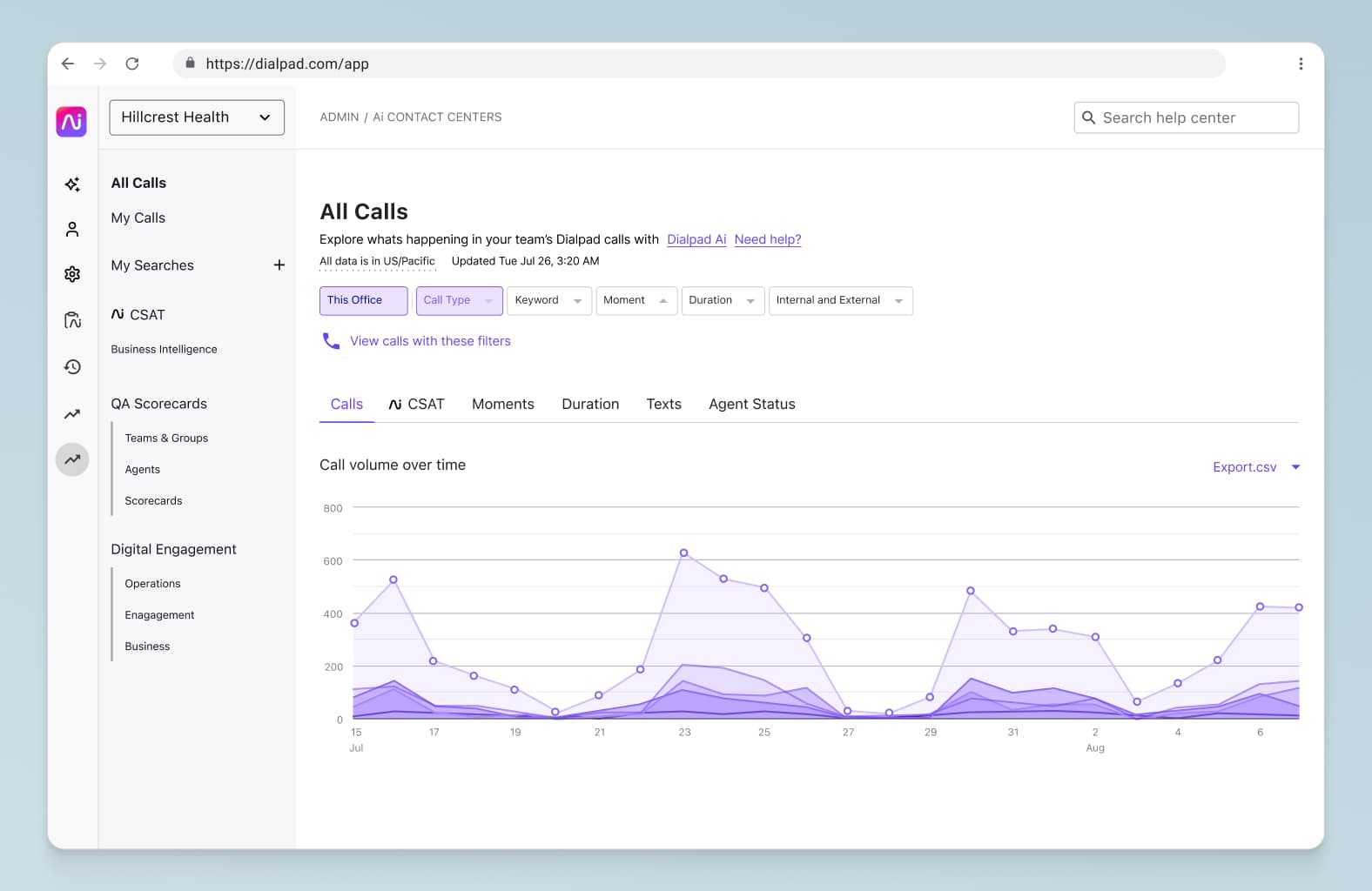
Feedback
This is less common nowadays, but traditionally, companies could use inbound contact centers to receive feedback about products and service from your customers. It’s probably more common to see these feedback requests through email today, but we still remember when McDonald’s and stores like The Gap had a CTA at the bottom of your receipt asking you to provide your feedback. (Often, you’d be entered into a draw too, as an incentive to get you to let them know about your experience. Remember those?)
Did you know that in Dialpad, you can create custom customer satisfaction (CSAT) surveys to collect feedback from your customers after a phone call? You can customize your survey question, and even give them the option to elaborate on why they gave you the score they did.

Have an inbound contact center team?
Give your agents the best tools to efficiently (and effectively) provide a good customer experience. Book a demo to see how Dialpad's AI-powered customer engagement platform works, or take a self-guided interactive tour of the app on your own!
✨ UPLEVEL YOUR CONTACT CENTER
Grab the Contact Center Playbook, which breaks down everything you need to know, from setup to staffing to optimizing—with examples from real contact center teams across different industries.
Finance
Billing questions, accounts receivable (AR) questions, vendor questions, procurement questions, order processing, payment questions, cancellation questions, refund questions…the list of questions that a Finance team gets can be pretty long.
And being able to answer questions for both internal teams and external clients and contractors quickly is essential. One way to solve this is to set up an inbound contact center to make sure that you’re providing everyone in the company the financial services support they need.
While all of the above are examples of inbound call center services, the first two (customer service and inbound sales) are typically the most common. So, let’s take a closer look at those in turn.
Inbound customer service: Hints and tips to get it right
1. Monitor your metrics regularly
A good inbound call center solution will come with analytics and dashboards that make it easy to keep track of KPIs like average handle time, CSAT scores, and more.
2. Deflect calls where you can
Many businesses are overwhelmed with inbound calls from customers asking general questions, needing troubleshooting help, and so on. Use a conversational AI solution (that ideally is just built into your inbound call center platform) to handle these basic questions, reduce wait times, and reduce the burden on your agents.
3. Automate live coaching
Another great thing that AI can do is coach agents through customer support questions in real time. Whether you have a group of new hires or an experienced agent who just needs a little help brushing up on the latest features and bugs, live coaching features (like Dialpad's Ai Assist) can automatically pull information for your agents, without managers having to personally guide them through these calls.
Inbound call center sales techniques to help you boost conversions
One thing you'll notice below—many of the same tips that work for inbound customer service teams also work for inbound sales teams!
1. Keep an eye on your sales metrics
Conversion rates can vary pretty widely by channel, so make sure you know the difference between how prospects convert via your website compared to via phone calls, for instance.
2. Automate as much of the sales process as you can
D2C companies have this down pat, but there's a lot you can do to get customers to make purchases automatically through your website—without needing a huge team of sales reps. Besides the online checkout process, one important step that you can automate is the support side of things. For example, if you find that a lot of customers ask about shipping and refunds before making a purchase, you might add a conversational AI feature to the checkout process that can automatically answer this question for a customer.
This reduces the number of repetitive calls your reps will get, which saves time and lets them focus on converting customers who need to actually talk to someone about a more complex question.
3. Automate live coaching
Just as customer support reps sometimes need supervisors to help them with an angry customer, sales reps sometimes need help from their managers too when there are tough objections they need to overcome, for instance. Here, AI can again help with searching connected knowledge sources and pulling that information for sellers instantly, while they're on the call.
Need to set up (or upgrade) your inbound call center software?
Book a demo of Dialpad to see how it can work for your business. Or, take a self-guided interactive tour of the app on your own first!








